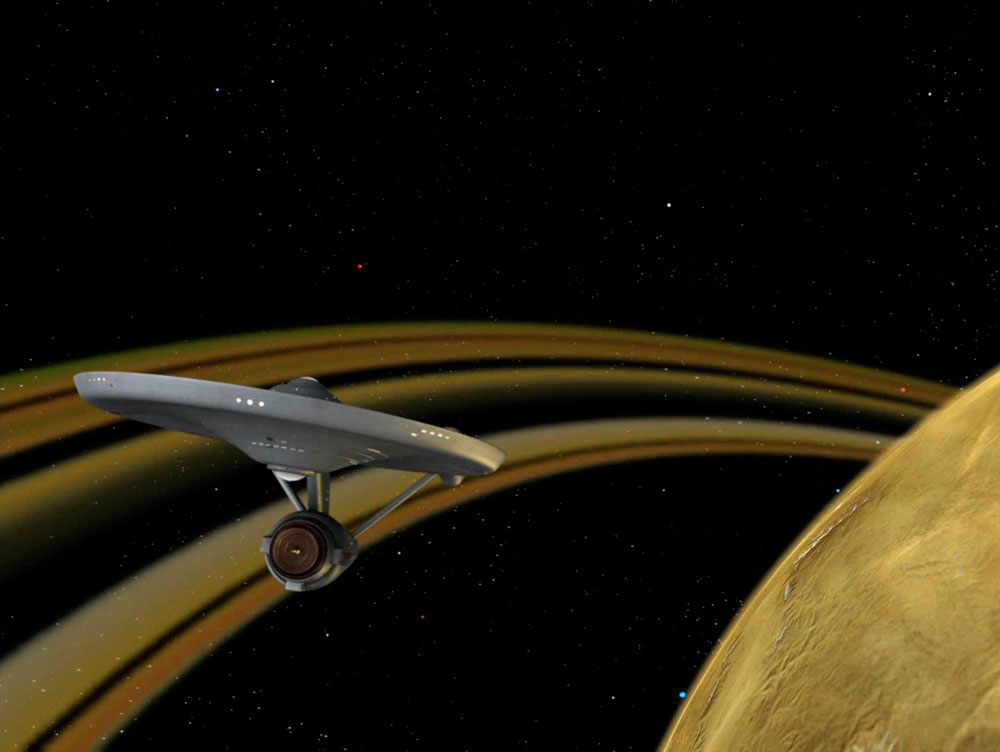Difference between revisions of "orbit"
From Trekipedia
m |
m |
||
| Line 1: | Line 1: | ||
{{ImageInfoBox2|name=orbit|file=camus-02-tos79.jpg|caption=[[U.S.S. Enterprise NCC-1701|U.S.S. ''Enterprise'']] orbiting [[Camus II]] ([[Star Trek|TOS]] [[Turnabout Intruder (Episode)|79]])}} | {{ImageInfoBox2|name=orbit|file=camus-02-tos79.jpg|caption=[[U.S.S. Enterprise NCC-1701|U.S.S. ''Enterprise'']] orbiting [[Camus II]] ([[Star Trek|TOS]] [[Turnabout Intruder (Episode)|79]])}} | ||
| − | {{TableRow|title=Advertising|data={{ | + | {{TableRow|title=Advertising|data={{AmazonLinkTOSBD}}}} |
|}</div> | |}</div> | ||
When objects such as planets or spacecraft orbit one another, the smaller of the two moves in a roughly circular pattern around the larger object, with its motion preventing it from falling deeper into the larger object's [[gravity]] well.<ref name="TOS00"/> Starships often utilize a "standard orbit" when orbiting a planet.<ref name="TOS01"/> | When objects such as planets or spacecraft orbit one another, the smaller of the two moves in a roughly circular pattern around the larger object, with its motion preventing it from falling deeper into the larger object's [[gravity]] well.<ref name="TOS00"/> Starships often utilize a "standard orbit" when orbiting a planet.<ref name="TOS01"/> | ||
Revision as of 18:38, 15 November 2021
When objects such as planets or spacecraft orbit one another, the smaller of the two moves in a roughly circular pattern around the larger object, with its motion preventing it from falling deeper into the larger object's gravity well.[1] Starships often utilize a "standard orbit" when orbiting a planet.[2]
Notes and References
- ↑ Template:RefTOS00
- ↑ Roddenberry, Gene (Executive Producer). "The Cage". Star Trek, season 0, episode 0 (Production number 01). Directed by Robert Butler. Written by Gene Roddenberry. Released 1986. Desilu Productions. 1965.

